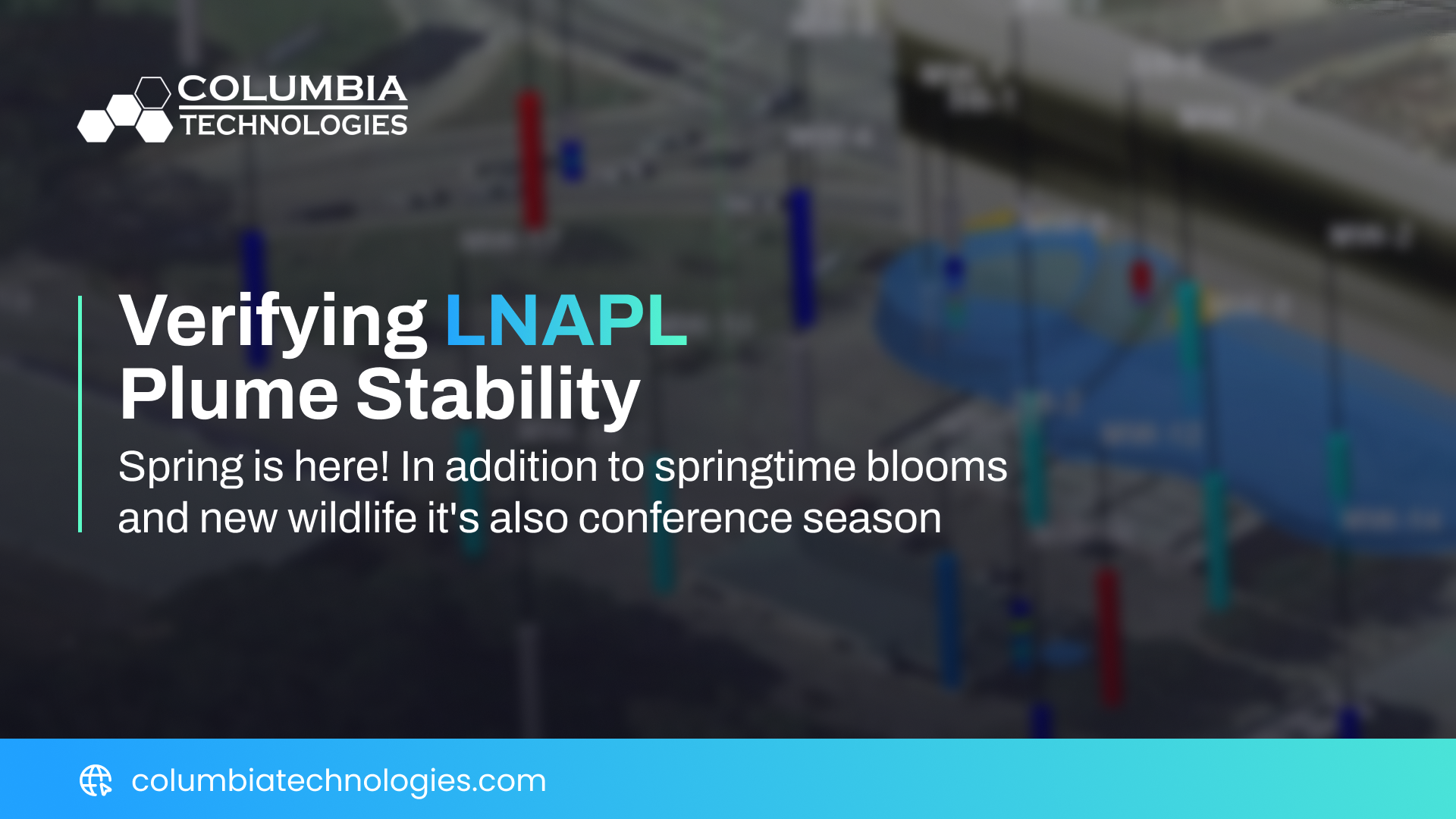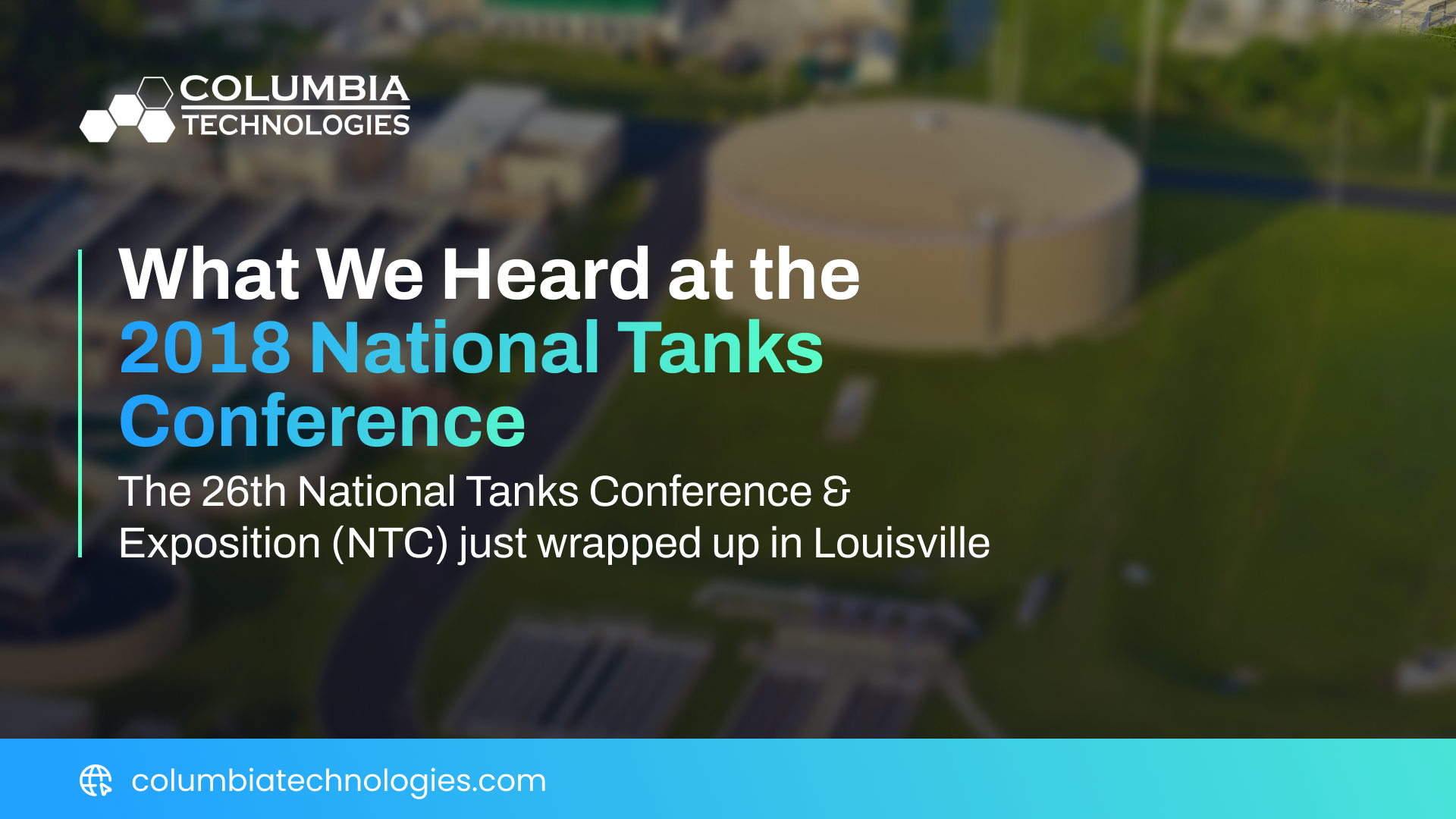Verifying LNAPL Plume Stability
Spring is here! In addition to springtime blooms and new wildlife it's also conference season. It's...

Spring is here! In addition to springtime blooms and new wildlife it's also conference season. It's...

The 26th National Tanks Conference & Exposition (NTC) just wrapped up in Louisville, Kentucky. The...
Spring is here! In addition to springtime blooms and new wildlife it's also conference season. It's always a pleasure to hear industry leaders advancing our our level of understanding of the complex biosphere tainted with man-made contamination. This past month I had the pleasure of attending the Fifth International Symposium on Bioremediation and Sustainable Environmental Technologies close to home in Baltimore 2019. Dr. John Cherry's presentation on what we know compared to what don't know through ignorance was a real eye-opener! The symposium was also highlighted with an awesome panel speaking on Contaminant Geology.
Last week I had the opportunity to speak at the Alabama Conference on USTs on the lessons learned through high-resolution investigations, and in particular the value of high-resolution soil sampling to isolate the residual LNAPL mass on our more complex and difficult sites. Several others emphasized the importance of improved characterization before implementation of expensive and most likely financially unsustainable remediation systems.
ITRC guidance document LNAPL-3: LNAPL Site Management: LCSM Evolution, Decision Process, and Remedial Technologies refers to several lines of evidence to verify LNAPL plume stability. Accurately mapping the residual LNAPL and verifying stability are the first steps in building an effective LNAPL conceptual site model. We were assured by ADEM staff that they hear this message and are supportive of better characterization focused on identifying any residual LNAPL and verifying the LNAPL body is stable.
At COLUMBIA, our team takes pride in providing industry leading data reports to conduct a remedial optimization study to characterize the problem and identify cost saving alternatives through:
Try our Interactive Project Pricing Calculator!
We'll roll up our sleeves and work alongside you better understand those persistent and complex LNAPL sites.
Tags: COLUMBIA Technologies, High Resolution Site Characterization (HRSC), News, SmartData Solutions®, Brazil, ITRC, UST, UST Cleanup Funds, Africa, NTC2018
The 26th National Tanks Conference & Exposition (NTC) just wrapped up in Louisville, Kentucky. The conference was professional rewarding as we learned how far the science of LNAPL management has come in recent years. Several presentations highlighted the importance of thorough data gathering before leaping to expensive remedies. Multiple innovative approaches to gather "scale appropriate" data in all types of soil conditions including consolidated bedrock were presented in the technical sessions. Our team had chance to hear from a lot of industry practitioners regarding their current challenges as well as attend the technical sessions. Here are some highlights of what we heard...
WHAT WE HEARD AT NTC 2018
Cho-Yi Risher and Wil Anderson from EPA OUST reported the results of their review of the state of financial responsibility of state funds started in 2017. Some of their observations:
A common theme: "If you have a water contamination problem, you have a soil contamination problem". An LNAPL conceptual site model (LCSM) should address where is the LNAPL, what soil does it reside in, is the LNAPL mass stable, and is it transmissive before implementing more aggressive remedial action.
HRSC or better yet, "scale appropriate" measurements of soil , water, and contaminants are needed for accurate conceptual site model before expending a lot resources on cleanup technologies or approaches. Typically, long-screen monitoring wells with their associated filter packs do not provide sufficient resolution to separate different soil permeabilities and accurately delineate residual contaminant mass.
HRSC is not one tool or methodology but a scientific approach employing scale appropriate measurements of soil (both consolidated and unconsolidated), water, vapor, and contaminants.
The industry and states need flexibility and mechanisms to allow for innovation. Regulations, funding mechanisms, and local procedures should incorporate flexibility to allow new and innovative approaches to be applied on the remaining difficult cases.
Natural Source Zone Depletion (NSZD) can generate mass reduction rates comparable to many engineered remediation methods. Characterization and performance monitoring should include the assessment of NSZD mass degradation rates and be compared to traditional remediation methods.
Tags: High Resolution Site Characterization (HRSC), LNAPL, UST, UST Cleanup Funds, NTC2018
© COLUMBIA Technologies, LLC. All Rights Reserved.
HQ 1 Research Court Suite 450-402
Rockville, Maryland USA 20850-6252
Tel +1-888-344-2704 |
Email: info@columbiatechnologies.com
Privacy and Legal | Terms of Service